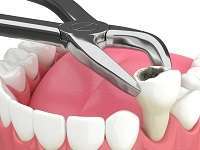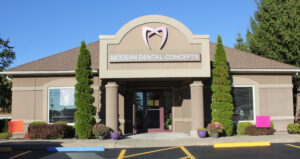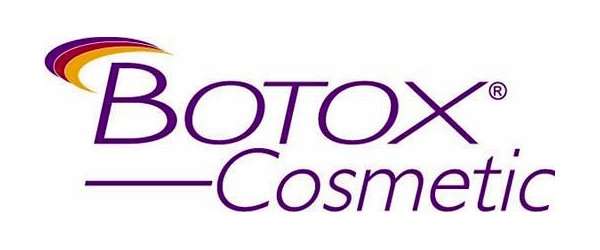
Although we make every effort to avoid pulling teeth, there are times when tooth extraction is unavoidable, such as with:
- Excess trauma or decay
- Broken or damaged teeth
- Loose tooth or oversized teeth
- Overcrowded or misaligned teeth
- Infection in the tooth
- Bone loss in the mouth
- Impacted teeth or wisdom teeth
- Periodontal disease
Sometimes decay, gum disease, or cracking may be too severe for repair work such as fillings or crowns. Or perhaps the damage is too advanced to attempt a root canal. Or maybe periodontal disease has destroyed the supportive bones, gums, and tissue and they no longer support teeth effectively. If those things happen, there is no other choice but to extract the problem tooth or teeth. Other reasons for tooth extraction may include making room for orthodontic treatment, removing vulnerable teeth to avoid further infection and removal of impacted wisdom teeth.
Simple extraction vs. surgical extraction
After every effort has been made to save a damaged or broken tooth, it sometimes must need to be removed. If the tooth is still whole, the doctor will be able to grip the crown of the tooth and extract it from the gums. This procedure is known as a simple extraction.
On the other hand, if the tooth is broken off at or below the gum line or if the tooth is brittle and breaks, a surgical extraction would be required, which involves moving the gums out of the way to extract the tooth, then stitching the gums back in place to complete the procedure.
Your comfort is important to us: Sedation and Anesthesia
The old saying “it’s like pulling teeth” simply doesn’t apply to Modern Dental Concepts. This is because our dental team is dedicated to making the procedure as painless as possible. Of course, all extractions are done with the utmost care, under local anesthesia. And it’s also nice to know extra sedation is available to help with any anxiousness you may feel prior to the procedure.
After the extraction, the doctor will pay careful attention to ridge augmentation and socket preservation in order to fill in the space left in the jawbone and to keep the tissue from deteriorating further. This is particularly important when replacing the extracted tooth with a dental implant.
Tooth Extraction Tips
BEFORE EXTRACTION:
Report any pain, pressure, or sensitivity to the doctor and together you can assess whether the tooth will need to be extracted. The doctor will take an x-ray of the problem tooth and the area around it – factors that affect the method of extraction include such things as how fractured the tooth is, how long the tooth is and how much bone is holding the tooth in place
AFTER EXTRACTION:
It takes a few days to recover – rest and relax for the first 24 hours. Eat soft foods the day after the procedure – pudding, yogurt, applesauce, etc. Take any medications as prescribed including over-the-counter painkillers. Don’t rinse for the first 24 hours after the extraction and spit gently. Brush and floss teeth as you do normally, but avoid the extraction site. Use pillows to prop up your head when lying down.
Dr. Nadler or Dr. Sheth-Nadler can look at your specific situation to determine if a tooth can be saved or if it needs to be extracted. Please call us at (330) 847-0676.




